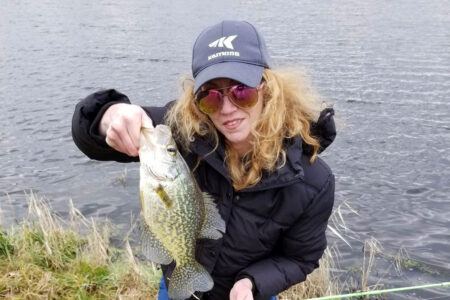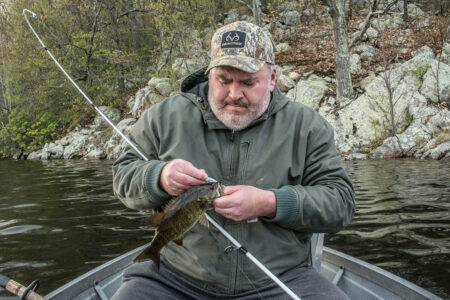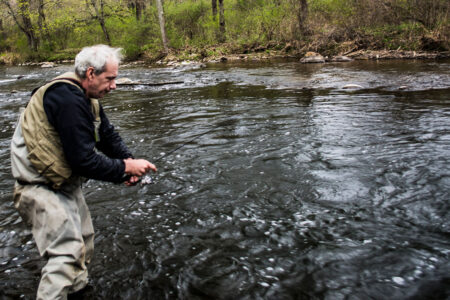
From bass to walleye, it’s prime time for deep drops on inland waters.
Lakes and reservoirs with enhanced fisheries offer anglers the possibility of catching multiple species from a single anchored position; that’s thanks in major part to New Jersey Division of Fish & Wildlife and organizations like the Knee Deep Club and Round Valley Trout Association.
In October, many steep drop-offs hold largemouth and smallmouth bass, yellow perch and pickerel among rocks and weeds as shallow as a foot or two, perhaps crappie in mid-column depths, and walleye, hybrid striped bass, and in some reservoirs, trout from 20 to 45 feet down. Classic grand slam catches of various species take laurels among many angling circles, but it’s possible to do three or four better, if you include channel catfish as factor 8.
Some would say sunfish don’t amount to nothing either, and a variety of colorful species inhabit our waters. If you succeed in lifting a painter’s panoply of all sorts of gamefish over the gunnel, an outing can feel like a dream, fulfilling the sort of action making fishing feel easy for a while.
Hitting it just right, especially after mid-October, isn’t all that difficult to do, once you’re clued into the right spots.
Anchor Mid-Point
As a general rule, setting anchor in 15 to 20 feet of water allows you to fish herring weighted by 3/4-ounce slip sinkers on bottom with two rods per man, while fishing shallows with the likes of Senkos, spinners, jigs, or nightcrawlers. Perch and sunfish provide plenty of action if you use what my son used to call his “secret weapon.” Under Matt’s influence, I deeply succumbed to using nightcrawlers, contrary to my typical preference for artificials. They teach me a lot about nature’s rewards.
When offering a nightcrawler, if a bass awaits nearby, sunnies or perch scatter and let the aggressive predator have the bait. I’ve caught October largemouths on several or more consecutive casts without a tap from panfish. You can also jig 10- to 15-foot depths and score crappies in some situations.
As Round Valley Reservoir fills again, rip-rap will produce. Weight rigs for trout 15 to 30 feet down, and catch both smallmouth and largemouth situating among shallow rocks. Merrill Creek Reservoir may offer similar opportunities. Spruce Run Reservoir (northern pike possible) has rocky drops with hybrids possibly on the deep end. Greenwood Lake and Monksville Reservoir have sharp drops, walleyes and bass. Is a musky an impossible factor 9? Of course not.
Finding the spot is everything. If you don’t own a boat, Dow’s Boat Rentals at Lake Hopatcong will accommodate you, if you have the state’s safety certificate. If you’re not familiar with the structure of the lake or reservoir you intend to fish, go to NJ Division Fish & Wildlife Lake Survey Maps online, buy the same in book form or purchase a Fishing Guide Map of the lake or reservoir in question. You’ll see deep drop-offs holding fish designated by close contour lines.
Of course, a fishfinder will possibly help you pin point schools of hybrids or walleye pods, although especially walleye may hug so close to bottom that they don’t mark on the graph. Chiefly, use the sounder to orient where to anchor and set bait deep.
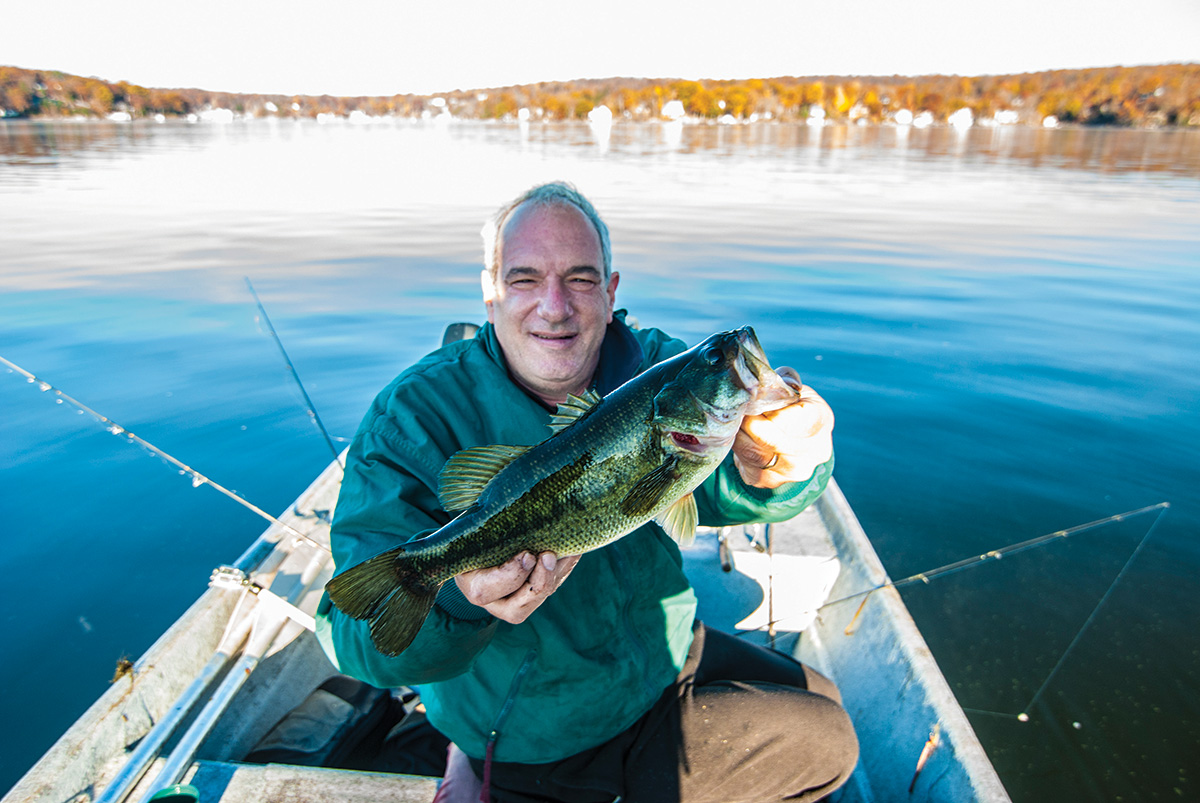
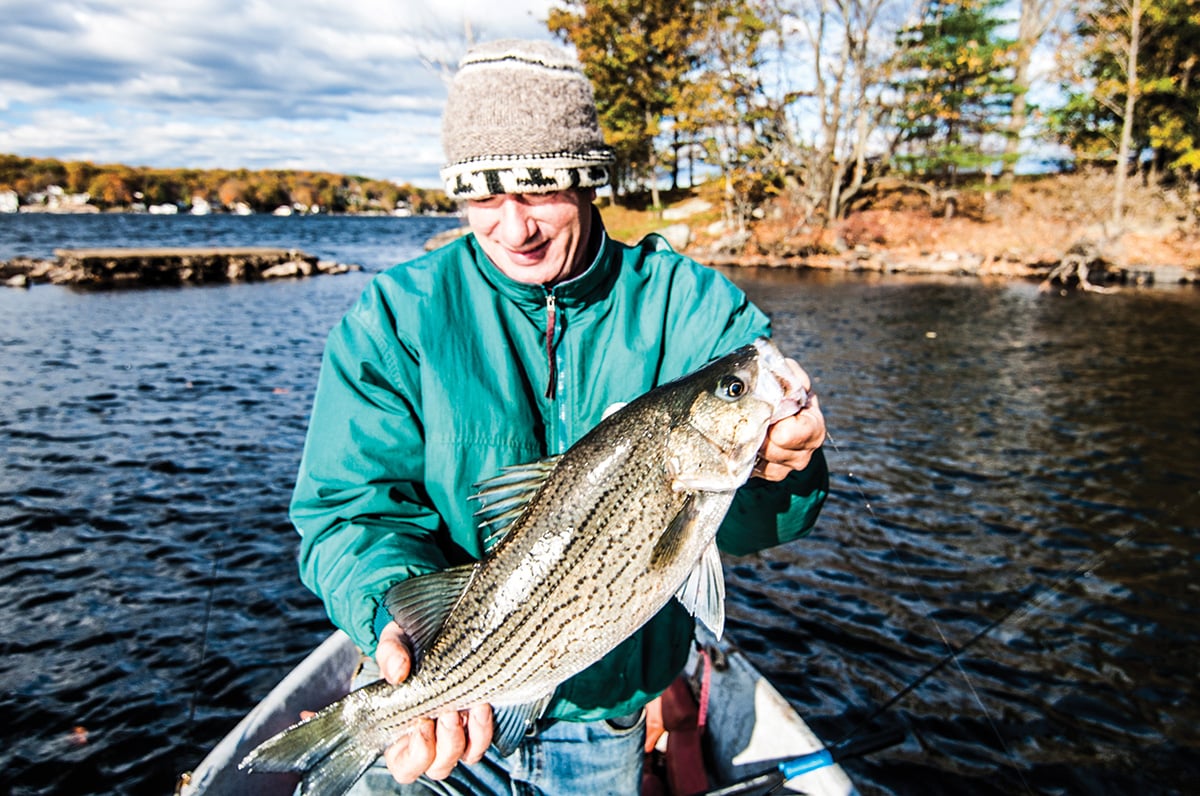
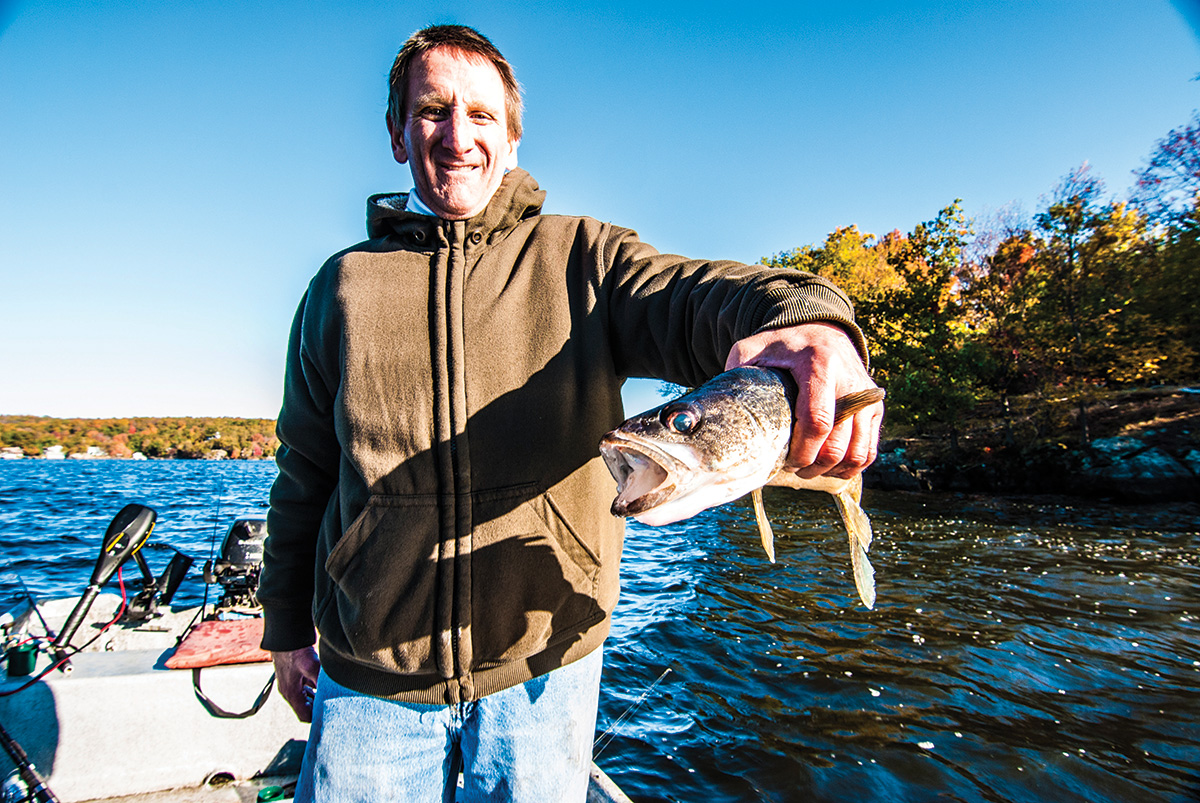
Deep Drop-Offs & Oxygen
An all-around figure for walleye and hybrid stripers is about 35 feet deep, but experimentation yields results. By using multiple rods, you can set bait up and down a drop-off from 20 feet to the bottom edge. In my experience, the bottom edge is the key, and I like to spread herring apart by 15 yards or so, casting so the sinker drops where I know the slope ends. Don’t worry about getting this exactly right. Experience will teach you, because walleye and hybrids will take your generous offers, even if they have to swim a few yards from that edge we only suppose they like to follow closely.
By October’s third week, Lake Hopatcong usually isn’t entirely turned over with oxygen re-established in the deepest depths of greater than 40 feet or so. By noticing how deep fish mark on the graph, you get an idea of how far that oxygen has penetrated. Far from cove and shoreline protection, out on the main lake, Nolan’s Point and the Ledge, for examples, take greater wind action and may feature oxygen deeper than other spots. When you first set herring, let them be for five or 10 minutes, and then reel back at moderate speed so as not to force them off hooks. See if they’re alive. If so, you’re good to let them bait your quarry a long while.
If a spot is new to you, try to determine if the bottom is rocky by graph indication or by feeling rocks while retrieving the sinker on the bottom. That’s hazardous and you may get snagged, but this will tell you the spot is fishy. Rock is better than mud. And any sort of snag usually means additional cover.
Worthy of mention, a hybrid striped bass revolution has occurred in recent years; many anglers switching from live herring to chicken livers. In my opinion, this is about as close to the definition of revolution that fishing can come, since the difference between a super-lively (but delicate) herring, and a piece of dead bait from the innards of a bird is divergent, but the new method, involving chumming with liver cat food, is very productive.
For our purposes of anchoring in one spot to access both shallows and depths, chicken livers are problematic, not best right on bottom. You would have to use slip floats, and that is doable, though less so with heavy chop. Part of the beauty, however, of letting a herring do its thing on a 4- or 5-foot leader anchored deep by a slip sinker is a simpler focus on fishing. Frequently looking at reel spools with bails open to spot any movement is easier than the demand on attention a bobber inevitably compels. Line either rapidly leaping from the spool (hybrid striper), or slowly unwinding towards the pick-up guide (walleye), may feel more thrilling than noticing the same associated with the drag of a slip float out there.
A Tactical Mixed Bag
Given that October largemouth and smallmouth bass often inhabit very shallow depths of as little as 1 or 2 feet; 15 feet is about maximum, with pickerel sometimes in the mix. Rocky shallows top side of the best drop-offs are great for both bass species this time of year, especially with some weeds associated. Water is cooling quickly and bass like a sharp incline into depths as they begin orientation for the cold water season.
Especially if you can find a large, undercut, flat-topped boulder, cast a jig, weightless Wacky rigged Senko, or worm blower inflated nightcrawler impaled on a size 6 plain shank hook, weighted by a split shot. Starting right on top and slowly pulled over the edge so it drops as close to the rock as possible, if there are any bass waiting in the shadows to ambush something highlighted outside, it will likely pounce. Some lakes have huge boulders with 10 feet of water or more directly in front of them. We’ve caught bass after bass in situations like this.
Walleye and hybrid rigs are simple: 6-pound test monofilament, size 8 treble hook through a herring’s nostrils, 4- or 5-foot leader of the same test tied to a small barrel swivel, and a 3/4-ounce steel egg sinker allowed to slip on the mainline. Whether a rod is fast action, slow action, moderate, 5 feet or 7 feet, this matters little, though you will get a longer cast with a longer rod and better accuracy from shorter; we use medium power.
Set the herring; let it swim wildly on the leader. Tangles happen less often than not, but if you want to spend the money, fluorocarbon mainline sinks and gets out of the way of that herring. Braid tangles much easier than monofilament or fluorocarbon.
For trout, use single shank size 6 hooks, same rig otherwise, although leaders as long as 10 feet by use of longer rods may prove effective on suspending trout. Marshmallow and mealworms, Power Bait and shiners produce.
Don’t wait to set the hook, once you notice line moving. Line passing through an egg sinker can get caught around an obstruction or gut hook, if you don’t tighten up and set immediately. The herring wear each treble hook like a crown. Single shank hooks placed through nostrils turn awkwardly against the bait’s head. Usually, walleye or hybrid stripers get hooked near the outside of the mouth, but have a pair of plyers or a hemostat handy for a walleye that gets hooked in the back of the mouth.
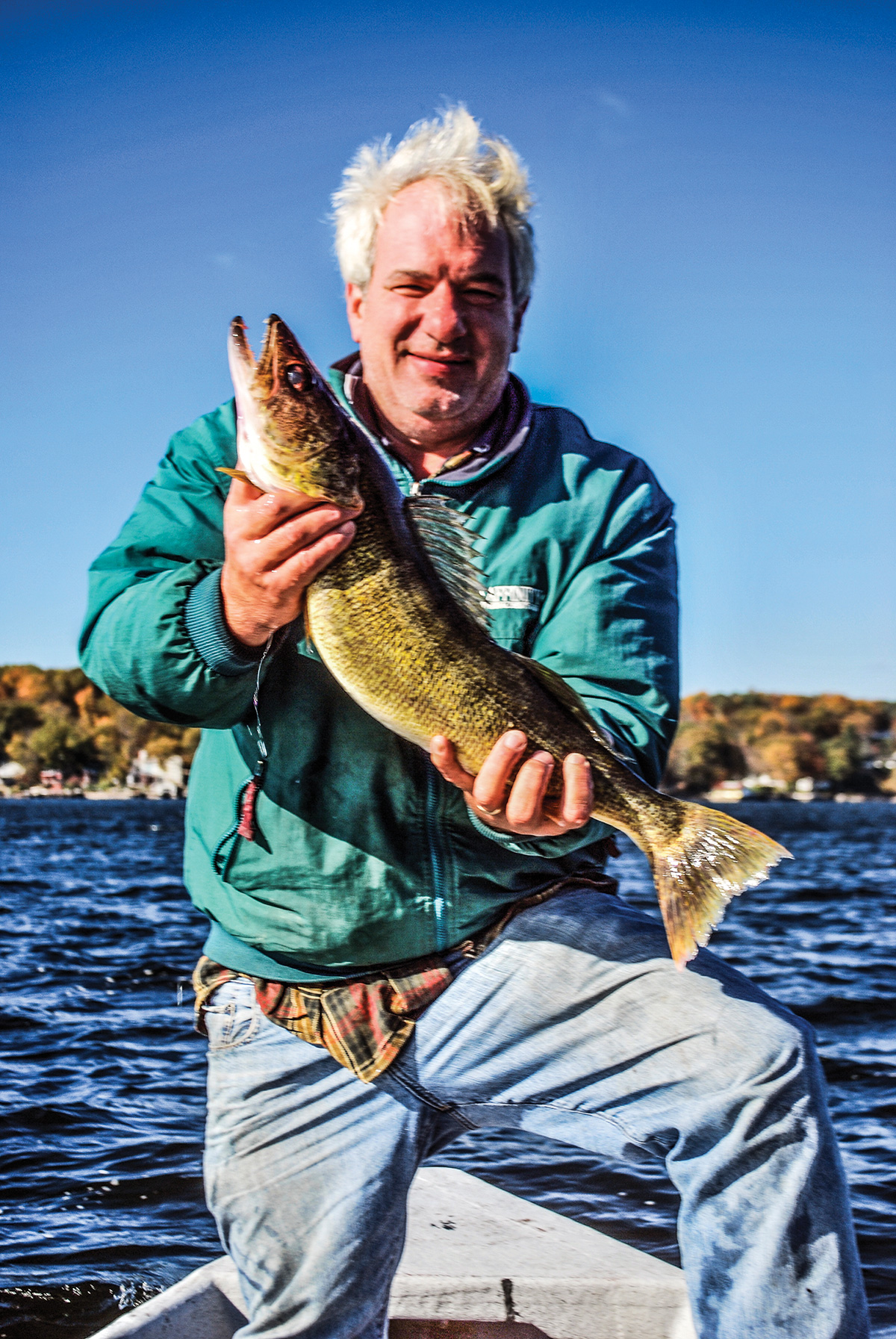
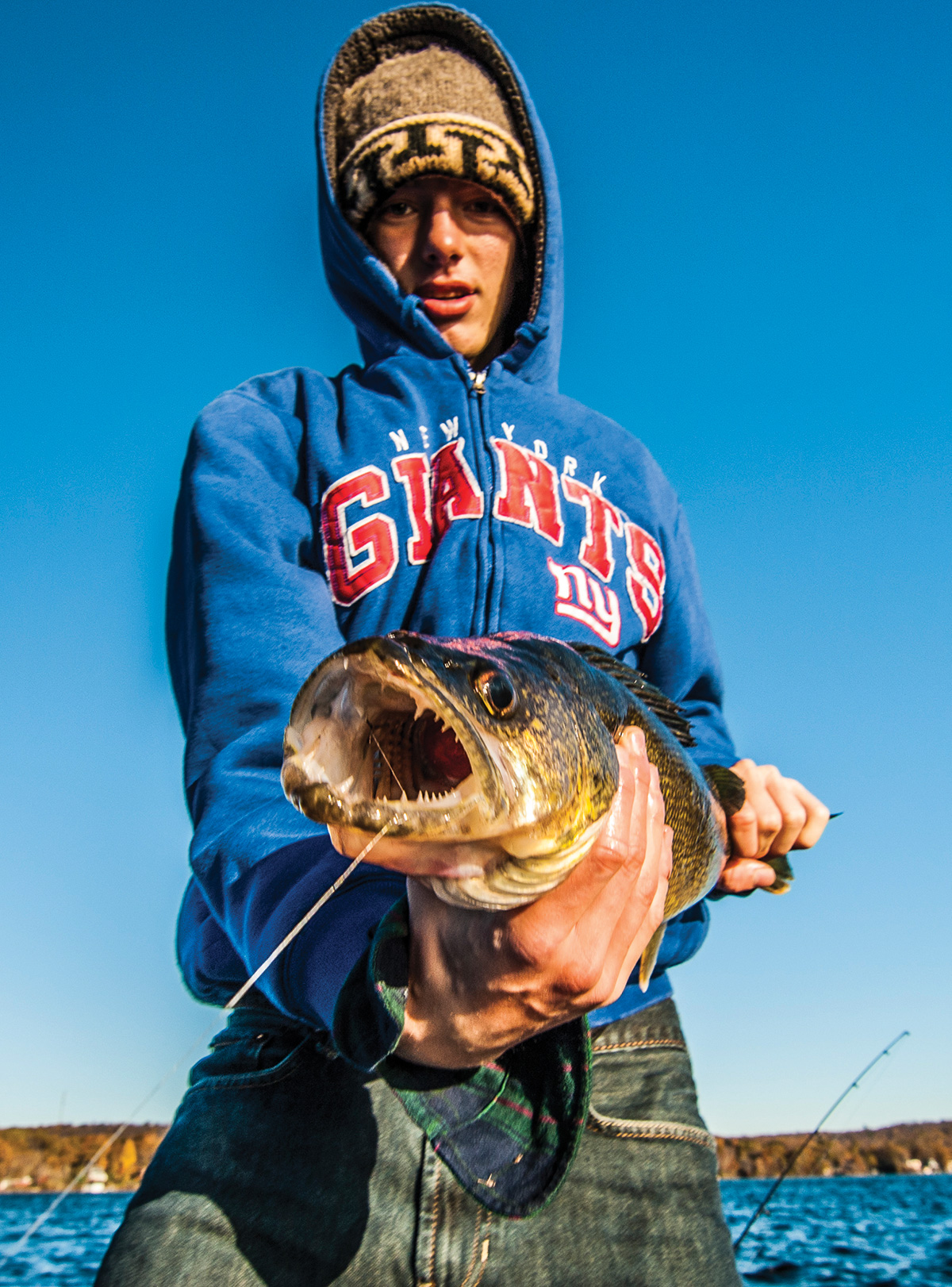
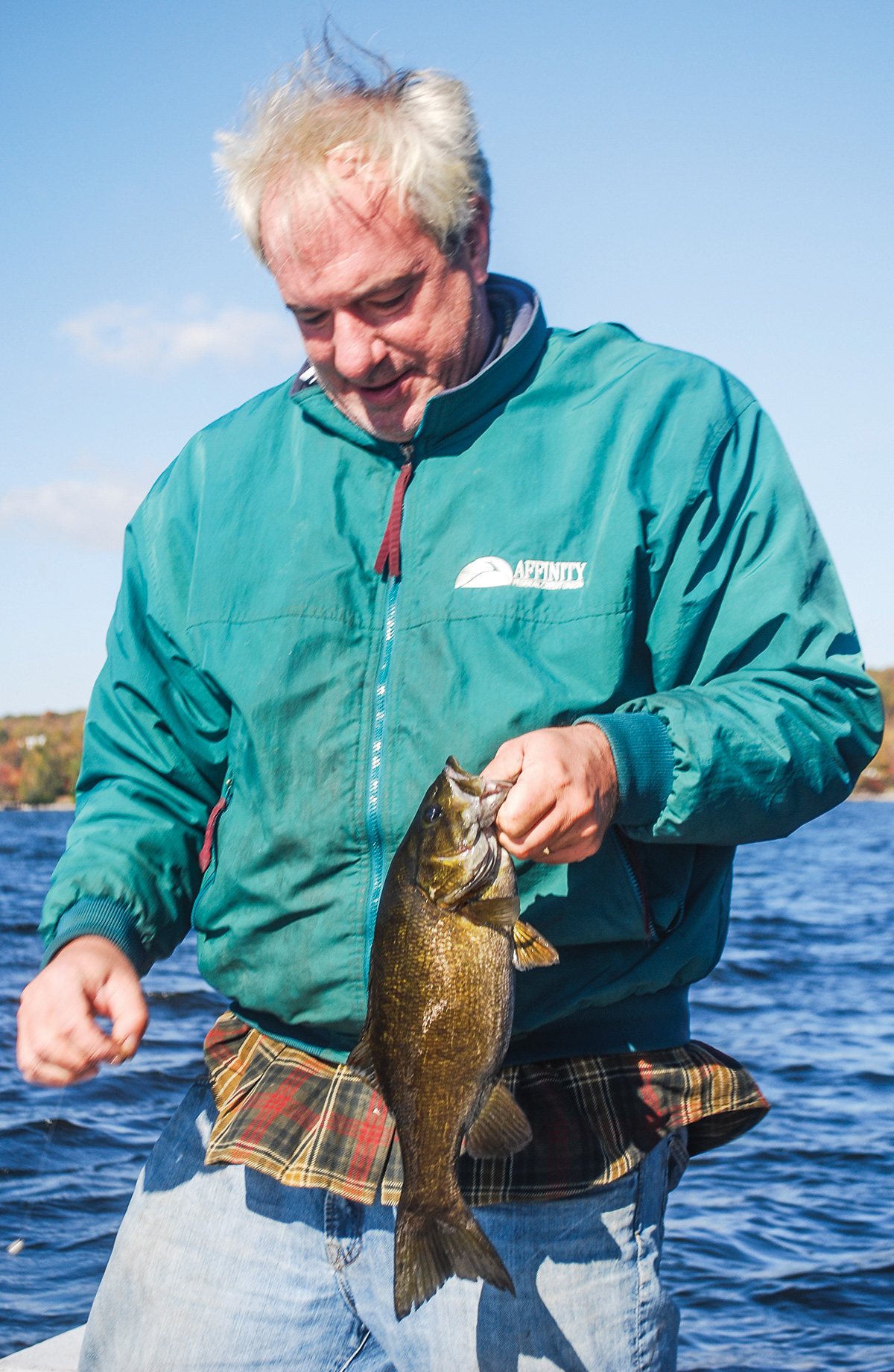
High Winds, Interesting Results
If you double anchor, you can beat wind swinging the boat side to side. We simply use a single 10-pound mushroom anchor. If windy, a long length of rope allows the anchor hold. Even with the boat moving left and right, the herring lines manage not to tangle, but for some, this might feel nerve wracking.
Some of our best catches have accompanied high winds. Motoring from one spot to another, we’ve noticed everyone else fishing out of the blow. Asking them about catches, unhappy reports came. Gamefish like a lot of commotion in the fall, rough surface overhead just right. Brave it, and you might do especially well.
Bass and pickerel get caught on crankbaits, jerkbaits, spinnerbaits and traditional plastic worms in addition to jigs, Senkos or nightcrawlers, possible choices too many to mention, but my son and I, friends besides, like keeping it simple.
Whether you fish lures or nightcrawlers, catching bass and pickerel, perch, sunfish, and crappie while keeping an eye on lines out for deep denizens makes fishing more interesting, particularly when a good-size bass rivals big walleyes and hybrids down below.

